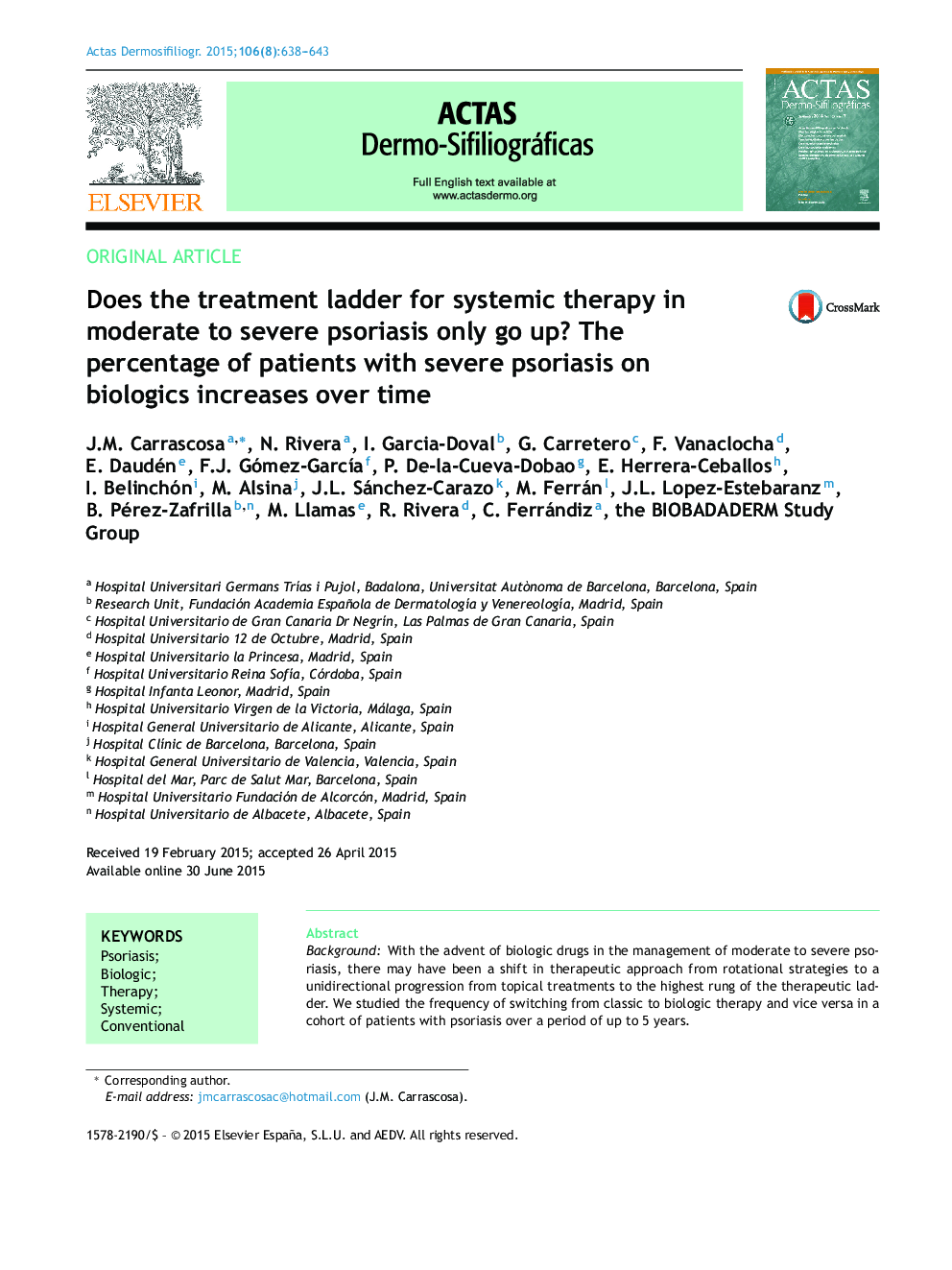| Article ID | Journal | Published Year | Pages | File Type |
|---|---|---|---|---|
| 3182610 | Actas Dermo-Sifiliográficas (English Edition) | 2015 | 6 Pages |
BackgroundWith the advent of biologic drugs in the management of moderate to severe psoriasis, there may have been a shift in therapeutic approach from rotational strategies to a unidirectional progression from topical treatments to the highest rung of the therapeutic ladder. We studied the frequency of switching from classic to biologic therapy and vice versa in a cohort of patients with psoriasis over a period of up to 5 years.MethodsPatients are included in the BIOBADADERM prospective registry when they are first prescribed any specific conventional or biologic systemic treatment. The data for each patient refer to the follow-up period from the time they entered the cohort until October 2013. To describe the pattern of switches from classic to biologic therapy and vice versa, we used the data in the registry on the first day of every 365-day period following the date each patient was included in the cohort.ResultsIn total, 47.3% of the patients (926/1956) were prescribed a classic systemic drug and 52.7% (1030/1956) a biologic agent on entry into the study. Of the 741 patients who accumulated 5 years of follow-up, 21.9% (155) were receiving nonbiologic drugs and 78.1% (553) were on biologic therapy on the first day of their 5th year of follow-up.ConclusionsThe proportion of patients receiving biologic therapy increased with longer follow-up.
ResumenIntroducciónCon el advenimiento de fármacos biológicos en el manejo de la psoriasis moderada a grave, es probable que haya habido un cambio en la actitud terapéutica desde estrategias de rotación a una progresión unidireccional desde tratamientos tópicos al escalón más alta de la escalera terapéutica. Evaluamos la frecuencia del cambio desde el tratamiento clásico al biológico y vice-versa en una cohorte de pacientes con psoriasis durante un periodo de hasta 5 años.MétodosLos pacientes fueron incluidos en el registro prospectivo de Biobadaderm cuando se les fueron prescritos por primera vez cualquier tratamiento convencional o biológico sistémico. Los datos para cada paciente se refieren al período de seguimiento desde la hora de su inclusión en la cohorte hasta octubre de 2013. Para describir el patrón de cambio desde el tratamiento clásico al biológico y vice-versa, utilizamos los datos en el registro en el primer día de cada periodo de 365 días después de la fecha de inclusión de cada paciente en la cohorte.ResultadosEn total, 47,3% de los pacientes (926/1956) fueren prescritos un medicamento sistémico clásico y 52,7% (1030/1956) un biológico al entrar en el estudio. De los 741 pacientes que acabaron 5 años de seguimiento, 21,9% (155) recibieron medicamentos no biológicos y 78,1% (553) recibieron tratamiento biológico en el primera día del quinto año de seguimiento.ConclusionesLa proporción de pacientes recibiendo tratamiento biológico aumento con el seguimiento más prolongado.
